Plastic Waste Collection
Plastic Waste Collection Volume Results
FY 2025 Collection Volume Results
|
Collection Month |
Collection Results for Fiscal Year 2025 |
Fiscal Year 2024 Collection Results |
Year-over-Year Comparison |
|---|---|---|---|
|
April |
82.26t |
96.32t |
-14.06t |
|
May |
82.55t |
83.76t |
-1.21t |
|
June |
70.00t |
70.28t |
-0.28t |
|
July |
78.15t |
76.91t |
+1.24t |
|
August |
76.66t |
77.84t |
-1.18t |
|
September |
77.82t |
70.83t |
+6.99t |
|
October |
78.23t |
77.11t |
+1.12t |
|
November |
68.04t |
76.05t |
-8.01t |
|
December |
- |
72.98t |
- |
|
January |
- |
93.17t |
- |
|
February |
- |
69.64t |
- |
|
March |
- |
69.97t |
- |
|
Total |
613.71t |
934.86t |
- |
Trends in Past Collection Volume
|
Collection Year |
Collection Results |
|---|---|
|
Fiscal Year 2024 |
934.86t |
|
Fiscal Year 2023 |
850.81t |
As a new item, the separation of plastic waste, glass items, and ceramics has started. As a result of your efforts in sorting garbage, the amount of Burnable Garbage and non-burnable garbage has decreased.
Let's continue to promote the recycling of waste.
Plastic waste that can be collected by the city
- Within 50cm (transparent, semi-transparent, or colored is also acceptable)
- Everything is made of plastic
- Clean items without stains
Only those that meet all of these conditions are eligible.
Please use the designated blue collection bags for plastic waste. For detached houses, place them in front of your home; for apartment buildings, please bring them to the collection point.
Container and Packaging Recycling Association - Contaminant Inspection
Under the leadership of the Container and Packaging Recycling Association, an inspection of plastic waste before the recycling processing (final stage) found that some waste unsuitable for plastic waste was discovered.
These wastes are judged to be inappropriate materials and become factors that hinder recycling processing.
Please be careful not to mistakenly put items into the plastic waste from now on.
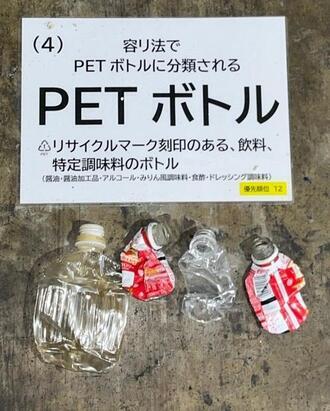
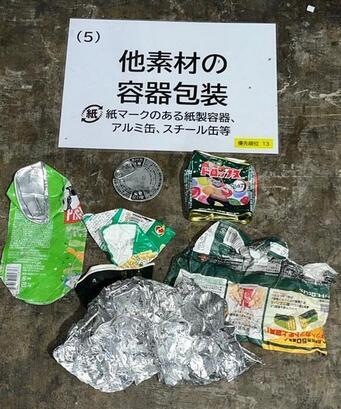
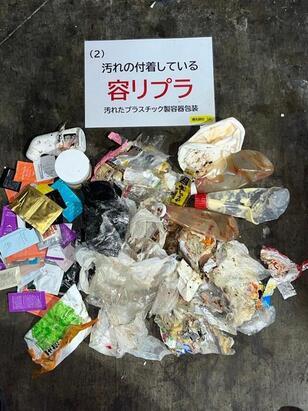
As a result of the inspection, it seems that many of the plastic wastes discharged from Inagi City still have dirt remaining on them.
Plastic with dirt remaining hinders recycling, and only clean plastic is suitable for recycling.
Items with contents remaining or those that cannot be cleaned should continue to be separated into Burnable Garbage or Non-burnable Garbage as before.
- Dirty, stains cannot be completely removed, soft plastic → As before, Burnable Garbage
Example: Mayonnaise or ginger tubes with contents remaining, natto trays, refill pouches for detergent or shampoo, etc. - Dirty or hard plastic → Non-burnable garbage
Example: Plastic flower pots with soil stains that cannot be removed, cosmetic bottle containers that cannot be washed inside, etc.
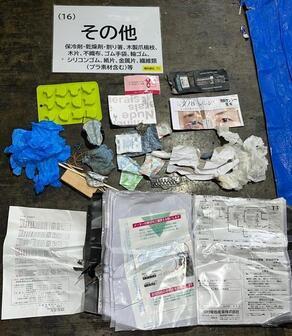
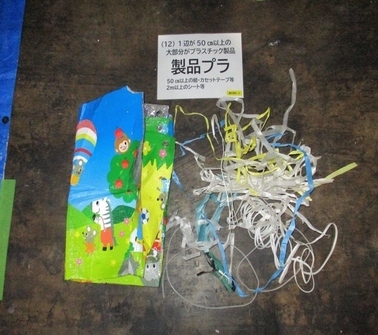

Contaminants at the time of inspection
- PET Bottles → Cans & PET Bottles
- Paper cup noodle containers, paper waste, aluminum foil → Burnable Garbage
- Dirty plastic waste (mayonnaise containers, wasabi tubes, ointment tubes, etc.) → Burnable Garbage
- Empty cans → Cans and PET bottles
- Rubber gloves, rubber ice pack bags → Non-combustible waste
- Thin fabric products → Burnable Garbage
- Rubber bands → Burnable Garbage
- Plastic file with contents (paper) inside → Burnable Garbage
- Plastic products over 50cm → Bulky waste
- Compact mirror → Non-burnable waste (Basically, many mirrors cannot be detached, so please do not put them in plastic waste.)
Note: Clean PP bands (plastic-type strings) over 50cm or plastic sheets can be cut to within 50cm and disposed of as plastic waste without any issues.
Intermediate Processing Operator - Contaminant Inspection
After the collection started, the intermediate processing contractor inspected the plastic waste.
Inappropriate items were found during post-collection processing. Please be careful when disposing.
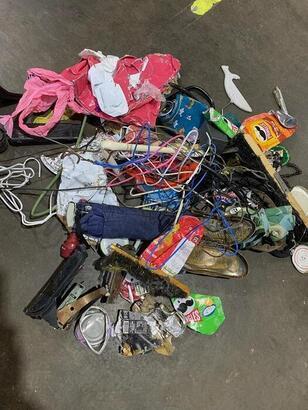
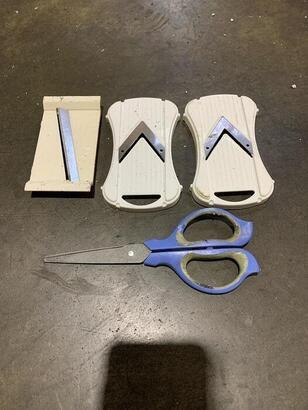
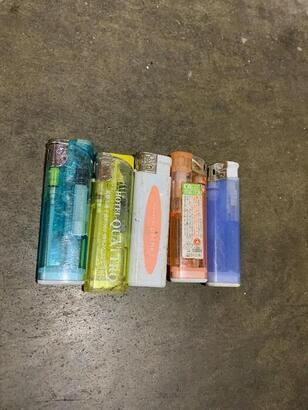

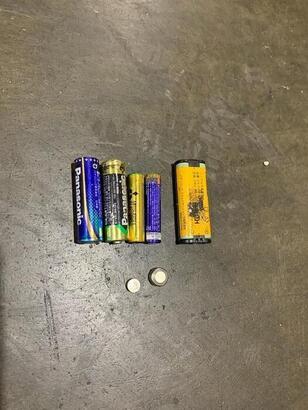
Inappropriate objects in the photo
- Empty beverage cans, empty cans, PET bottles → Cans & PET bottles
- Container for snack food made of paper tube → Burnable Garbage
- Brush part containing wood from the deck brush → Burnable Garbage
- Deck brush (including handle, if 50cm or more) → Bulky waste
- Umbrella → Non-burnable waste
- Spray cans, lighters → Hazardous materials
- Plastic hangers containing some metal, metal-only hangers → Non-burnable waste
- Scissors (if more than 70% is metal) → Metal items
- Slicer with metal blades → (Please tape the blade part) Non-burnable waste
- Laptop battery → (Please attach tape or similar to the terminal part) Hazardous waste or small electronic device collection box installed in Public Facilities
- Batteries → (Insulate with tape or similar before disposal) Hazardous waste
Let's not mix plastic waste with other garbage.
If foreign substances are mixed with resources, it will hinder recycling.
Currently, a three-step inspection is conducted to prevent foreign object contamination.
Stage One: When Citizens Dispose of Resources
Stage 2: When Collecting Resources
Stage 3: When sorting at the processing facility
The first stage check when disposing of resources in particular produces significant effects.
To make effective use of resources, please separate resources and garbage correctly!
Please let us know your feedback on how to make our website better.
Inquiries about this page
Inagi City, Department of Urban Environment and Development, Living Environment Division
2111 Higashi-Naganuma, Inagi City, Tokyo 206-8601
Phone number: 042-378-2111 Fax number: 042-377-4781
Contact the Living Environment Division, Urban Environment Management Department, Inagi City



















